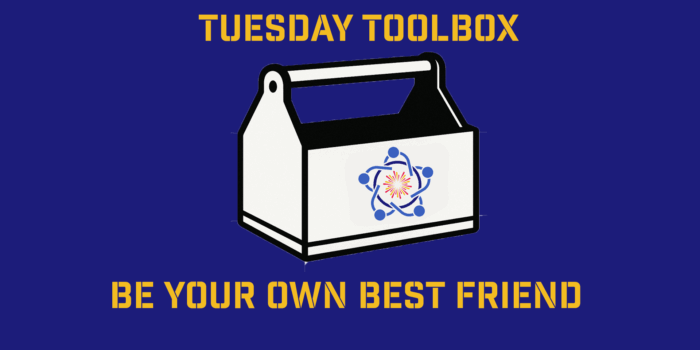Over the past year and a half, we’ve lived through a pandemic, a social justice awakening, and the devastating impacts of the climate crisis. The Great Resignation is on the rise and many workplaces are now adapting to a hybrid model. At home, families continue to juggle job and caregiving responsibilities.
In short: Life’s been hard and it’s taking a toll on our mental health.
Globally, more than 20% of people are struggling with anxiety and depression. In the U.S., at least 8 in 10 people who took an anxiety or depression screening in 2020 reported moderate to severe symptoms. We all know that stressors at work can often cause or exacerbate these problems.
To better understand how employees are dealing, we conducted a survey of 1,000 full-time U.S. workers across different industries. We found that only 30% of employees felt comfortable talking about their mental health at work. Nearly half of those who opened up about their mental health experienced negative consequences, like being labeled “overly emotional,” passed over for promotions, micromanaged by superiors, or given fewer opportunities for development.
We also discovered that managers know that they play a role in employee stress. When we asked about burnout — a significant factor — we learned that 84% of managers reported feeling “somewhat” responsible for their employees’ struggles.
We believe that managers, especially new and young team leaders, may have a unique opportunity to center employee care and push for a necessary cultural shift. When managers lead conversations about performance and productivity with empathy and care, everyone feels more valued and supported. Similarly, when managers prioritize learning about their direct reports’ interests and strengths, understanding what success means to them, and creating goals that help them meet both their professional and personal needs, everyone thrives.
If you’re just starting out as a manager, you have to do more than set business goals. Here are some specific strategies you can adopt to empower yourself and advocate for your team’s mental health at work.
1) Understand your company’s policies.
To start, take some time to research your organization’s policy on mental health. Most companies have a resource page or handbook with this information, including whether you offer “wellness” days or any kind of internal counseling for your workers. You can also look at your health insurance provider’s site to learn more about the specific services they will cover.
It’s important for you to be familiar with the resources available should your team members need them, or approach you for guidance. This includes employee assistance programs, mindfulness resources, resilience trainings (for employees and managers), suicide prevention hotlines, or Employee Resource Groups (ERGs). If your company has a corporate wellness app, learn how it works and regularly encourage your team to use it.
Keep your team informed about any new programs, workshops, or professional development funds you learn about. If possible, seek feedback on whether the resources are helpful to them.
You can also share your feedback about these resources with senior management or your own supervisor. Let them know what’s working and not working for both you and your team.
When managers like you take the time and initiative to suggest improvements, it can benefit everyone in the organization.
2) Don’t pressure anyone to discuss their mental health.
As a manager, you should never ask an employee for their health status or any other medical information. Avoid saying things like, “You look depressed. Is everything okay?” or “You seem to be taking a lot of sick days.”
Not only can that be embarrassing, awkward, or uncomfortable for an employee, you may be violating employment laws that forbid such inquiries.
Familiarize yourself with your company guidelines around these sensitive communications as well.
3) Check in with your team.
While you should never press an employee about their personal mental health situation, you should create a psychologically safe work environment that welcomes openness, acceptance, and transparency. This may help your team feel comfortable initiating discussions around their mental health on their own accord or confiding in you when they wish to. Ideally, no team member should feel unsafe approaching you with a mental health issue.
Set up regular one-on-one meetings with your teammates. Ask them questions to understand how they are doing, whether they’re able to have a good work-life balance, and what they need to feel energized and refreshed. Asking your colleagues thoughtful questions — instead of grilling them — will foster a culture of care and help establish what actions you can take as a manager to support your team.
In large meetings, ensure that all concerns and questions are welcome. Give space for everyone to participate, especially if someone has an alternative viewpoint. Make it okay to share perspectives safely and without judgment.
This is a hard one to achieve — and it starts by being as intentional as possible. One way to do this is by acknowledging and addressing the difficult times we’re going through. For instance, if there’s disturbing news about a crisis or natural calamity, write an email to your team or use the first few minutes of a team meeting to address what’s going on in the world. Let them know that you’re available if someone wants to talk.
4) Listen with empathy.
Remember that every employee is facing a unique set of challenges — whether it’s lack of childcare, taking care of an ailing parent, the loss of a loved one, or something else. Your job as a manager is to listen and determine how to best help them.
Is someone feeling overwhelmed with meetings? Do they need more support from you to voice their opinions in group settings? Is there something in the company culture that your team (or a team member) is unhappy with?
When people share their stories, be prepared to listen without judgment. Play back what you’ve heard and clarify what they need. You can say, “Thank you for sharing that with me. I know this is a difficult time for you and I want to help you the best I can. How can I or the company best support you right now?” Then, point them to company resources.
Encouraging your team to share their views as honestly as possible — for example, offering anonymous surveys to ensure all voices are heard — will help you better see systemic issues in the organization and address them.
Finally, follow through with your promises. If you tell a direct report that they can work flexible hours, make sure you are able to deliver on that promise. Even if you’re not able to fulfill someone’s request, be honest and brainstorm other ways to accommodate their needs.
5) Lead by example.
When you’re having a difficult time, acknowledge it. When people in positions of relative power talk about their own discomfort, it normalizes these conversations for everybody around them. When you show vulnerability, it shows your team that you’re human, reduces the stigma around mental health conversations, and nudges them to speak up.
It’s also important to prioritize your own wellbeing because it shows your employees that self-care is both encouraged and expected. This can look like taking personal time off, not responding to emails when you’re out of the office — the list goes on. Know that your actions give your team permission to give themselves the care they need.
When you look out for your employees, you not only build your reputation as a caring manager but also as a leader who is emotionally intelligent. Being intentional about building a safe, trusting, and secure culture can go a long way. We are all human — and when leaders see their team as individuals beyond a role or title, it helps everyone become better at their job.



